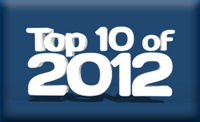How Will India's Free Drugs Impact Big Pharma?


By Lori Clapper, Editor
Last month, India announced a $5.4 billion plan that enables public doctors to offer free generic medication to its population. Under the plan, Indian doctors can prescribe medication — from a government-mandated list of generics — to their patients at no cost. While the new policy does offer a relatively small $50 million provision for cases that might call for branded medication, the decision could still deal a blow to brand-name pharma companies — which spend billions developing medications they expect to sell in emerging economies like India, one of the world’s fastest growing drug markets.
This news couldn’t have come as a complete surprise to the pharmaceutical industry — India’s new policy stems from initiatives that were quietly rolled out last year in the states of Tamil Nadu and Rajasthan. However, with emerging markets targeted to make up about 28% of global pharmaceutical sales by 2015 (according to an IMS Health report), the plan will certainly force big pharma to rethink its tactics in the region.
To get a better picture of how the policy could affect big pharma companies, I spoke with Chris Stirling, European head of chemicals and pharmaceuticals at KPMG. He explained it will be vital for brand-name drug companies to become more deliberate about how they approach India, especially since the government budget for more expensive branded medicines is less than 1% of that multibillion dollar pie. “Companies will have to carefully segment the Indian market, so that they really understand where demand will be for their products,” he said.
Stirling also believes that big pharma companies should get creative. They will have to put forth more effort to connect with local Indian partners, or consider how they can sell some of the medicines to the growing middle class in India, who “are looking for something more than what they can get at state hospitals,” he told me. While public doctors can only give away generic drugs under the new plan, physicians at private clinics are free to prescribe brand medications at any time, since they are not held to the stringent government rules.
Clearly, generics manufacturers stand to benefit the most from this free-drug plan, though they already stake claim to 90% of drug sales in developing countries. In fact, U.S.-based Abbott Laboratories, which bought an Indian generics plant in 2010, is the biggest seller of both branded and generic meds in India.
To add another twist, India’s government earlier this year granted its first compulsory license to Natco Pharma to manufacture a generic version of Nexavar — even though Bayer’s liver and kidney cancer drug is still under patent. What’s even more alarming, is this is all happening with the support of the Indian Patent Office. These compulsory licenses essentially override intellectual property (IP) patent protection in India, and in other emerging markets (In May, China reformed parts its patent laws to permit Chinese drugmakers to manufacture generic versions of patented drugs during emergencies or other special circumstances.)
While its full impact remains unclear, India’s strategy to improve healthcare for its people could set a precedent for other emerging markets to follow, and lead to major changes in the global pharmaceutical industry.
How do you think big pharma will be impacted by India’s free drug plan? By developing economies’ growing disregard for international drug patents? Will strategic partnerships in emerging markets become even more important in the coming months? Please share your thoughts in the comments section below.
